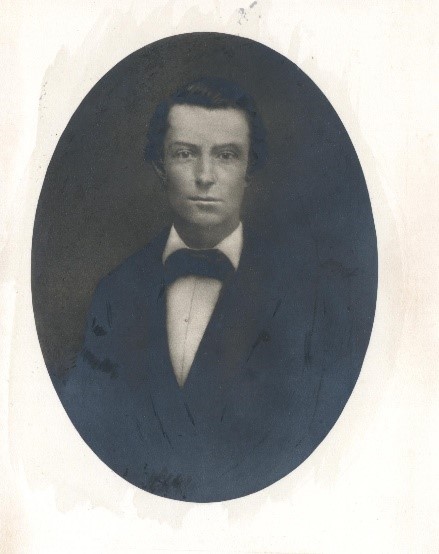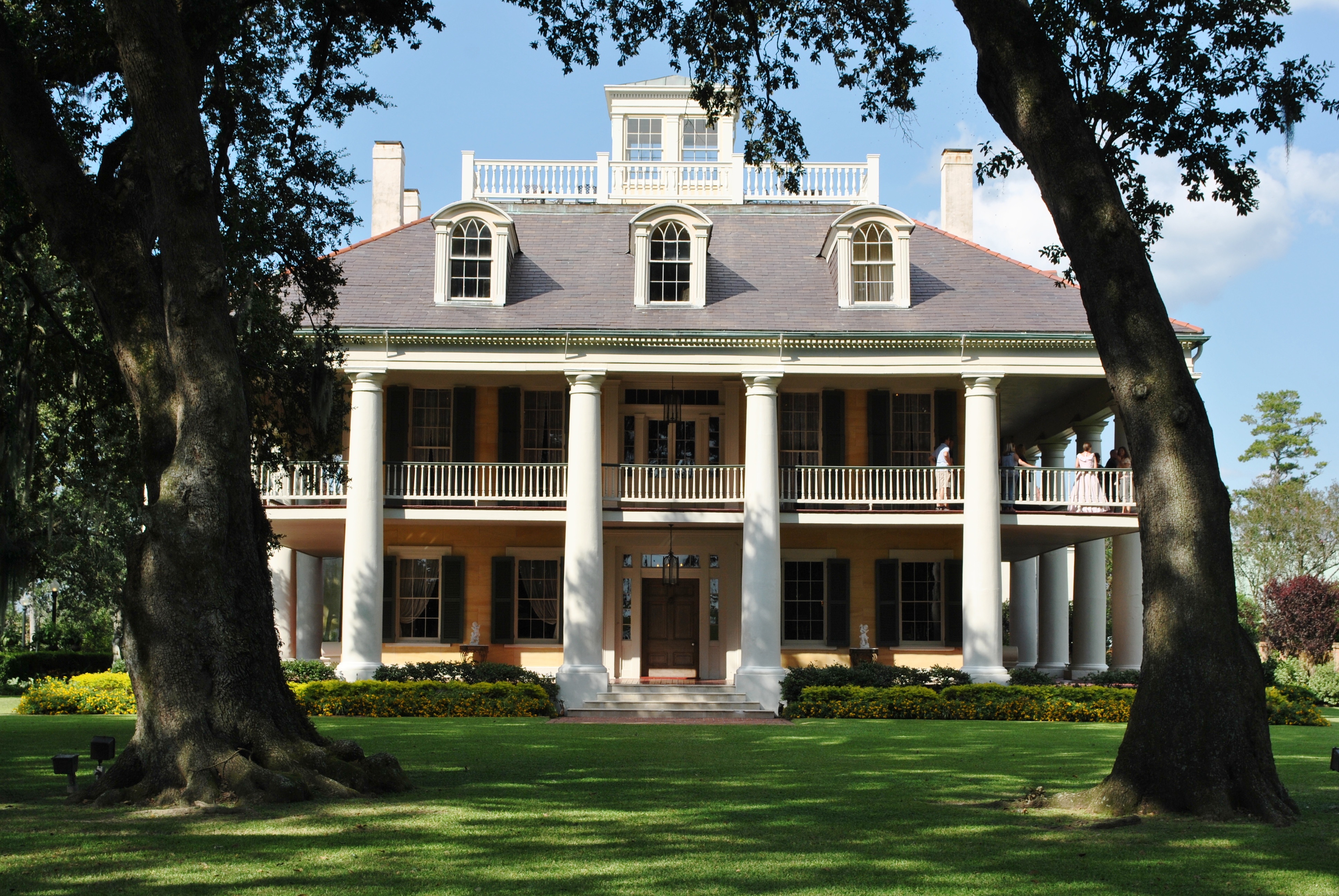Queer Places:
Houmas House Plantation and Gardens, 40136 LA-942, Darrow, LA 70725, Stati Uniti
Green Hill Cemetery, 422 Green Hill Rd, Union, WV 24983, Stati Uniti
 John Burnside (ca 1798 - June 29, 1881) was an Irish businessman who bought the Houmas plantation in 1857 for $1 million.John
Burnside was born in North of Ireland about 1798 and immigrated to the United
States in the 1820s. According to another story reported by The New York Times
at the time of Burnside's death, Andrew Beirne, was riding one afternoon when
he stopped to water his horse at a little rivulet or brook, and he found an
infant boy carefully wrapped up asleep on a bed of rushes. He searched for the
parents, but the night was approaching and he took the child and carried it to
his house, where he placed it under the care of his favorite attendants, John
and his wife. The parents never turned up, and the boy was named John
Burnside, a name suggested by the locality where he was found, by the side of
a burn or brook, a word common in Scotland and in the North of Ireland. When
asked to confirm the story in 1835, Andrew Bierne did not contradict it, but
only laughed and winked and shrugged his shoulders when it was repeated. And
Burnside never conversed or would permit any one to converse with him about
his origin or birthplace.
John Burnside (ca 1798 - June 29, 1881) was an Irish businessman who bought the Houmas plantation in 1857 for $1 million.John
Burnside was born in North of Ireland about 1798 and immigrated to the United
States in the 1820s. According to another story reported by The New York Times
at the time of Burnside's death, Andrew Beirne, was riding one afternoon when
he stopped to water his horse at a little rivulet or brook, and he found an
infant boy carefully wrapped up asleep on a bed of rushes. He searched for the
parents, but the night was approaching and he took the child and carried it to
his house, where he placed it under the care of his favorite attendants, John
and his wife. The parents never turned up, and the boy was named John
Burnside, a name suggested by the locality where he was found, by the side of
a burn or brook, a word common in Scotland and in the North of Ireland. When
asked to confirm the story in 1835, Andrew Bierne did not contradict it, but
only laughed and winked and shrugged his shoulders when it was repeated. And
Burnside never conversed or would permit any one to converse with him about
his origin or birthplace.
After his death, people claiming his fortune gave another version of his origins: John Burnside was the son of Dr. Robert Burnside and Margaret McFarland who lived at Cross House, Main and Mill Streets, Newton Stewart, Tyrone County, Ireland. He had several siblings: Prudence, William, Robert, Matthew, Jenny, Nancy, and Eliza, of whom he was the youngest. Prudence married her cousin, Captain Robert Burnside of Londonderry and had one daughter, Martha, married a Professor James Given of Newtonstewart; they later moved to Chicago and their son, Robert Henry Given, was one of the claimants of Burnside's estate. Eliza married John Wilson in 1809 and moved to Leckpatrick Desert, Tyrone County, Ireland; her son James Burnside Wilson moved to Philadelphia and was another of the claimants. Another claimant was Chief Justice Thomas Burnside of Bellefonte, Pennsylvania, who was son of William Burnside, brother of Robert Burnside, John Burnside's father.
John Burnside left Londonderry in 1815 and moved to the United States
landing, probably, in Baltimore. Due to the fact he had not fully paid his
ticket, he went to work for Robert Wiley, a merchant from Fincastle, Virginia.
After the debt for the ticket was repaied he went to work for Mr. Patton, of
Calhoun & Patton, Fincastle, Virginia. While working for that firm, he met
Colonel Andrew Beirne.
At first he worked as salesman for Andrew Beirne, a merchant in Monroe County, Virginia. He was a sort of supervising clerk or agent, visiting the several stores alternately. He was a favorite of Bierne and he was taciturn, reserved, and morose, even when a young man. He later partnered with Beirne's son,
Oliver Beirne, in a mercantile business established in New Orleans in 1837. Oliver Beirne retired in 1847 and Burnside became a wealthy merchant, his business on Canal Street, New Orleans.[1] He had no social feeling, no sympathy, no public spirit, but was pre-eminently successful in trade.
The more than 10000 acre Houmas House was sold to John Burnside in 1857 for $1 million. Burnside had increased the acreage to
12000 acre within the span of a few years and built four sugar mills to
process his crop. With approx 750 slaves on it and Burnside's many surrounding plantations, it was the center of the largest slave holding in Louisiana prior to the American Civil War and was the largest sugar producer in the country, actively working the crop on 98,000 acres.[2] Other than the Houmas, Burnside bought other 10 plantations. Burnside was among the first former slaveholders to continue his sugar business through paid labor.

Houmas House
During the war, plans were made to use Houmas House as a headquarters for Union general Benjamin Franklin Butler. Burnside, still an Irish citizen, reputedly prevented this by suggesting that international complications would arise if his estate was seized by Federal authorities. In addition to building a railway to carry his products to market, "The Sugar Cane Train" (1862), Burnside, a bachelor and a character, offered money to any parents in the parish who would name their sons John.
According to the people claiming to be John Burnside's relatives from Ireland, Burnside left home around 17 years old after he had an affair with a servant (no gender specified) in his father household, and therefore he was banished, sent away to America by his father.
An avid horseman, Burnside was used to bet a lot of money, and usually he ended up a winner. In New Orleans he bought the mansion of James Robb, nicknamed the Robb's Folly, in the Garden District on Washington Avenue, which later became one of the first buildings of the newly founded Newcomb College until it was demolished in 1954.
A lifelong bachelor, John Burnside died on June 29, 1881, in his vacation house at White Sulphur Springs, West Virginia, and left his estate, estimated 5 or 6 million dollars, to
Oliver Beirne, his former business partner and lifelong friend. When Beirne died Houmas House and the other plantations went to William Porcher Miles, Beirne's son-in-law.[3] Following the death of Miles in 1899, the property began to be divided up and the house began to fall into disrepair. Burnside is buried with the Beirne family in the Green Hill Cemetery, Union County, West Virginia.[4]
Burnside, Louisiana, is named after John Burnside.
My published books:


BACK TO HOME PAGE

 John Burnside (ca 1798 - June 29, 1881) was an Irish businessman who bought the Houmas plantation in 1857 for $1 million.John
Burnside was born in North of Ireland about 1798 and immigrated to the United
States in the 1820s. According to another story reported by The New York Times
at the time of Burnside's death, Andrew Beirne, was riding one afternoon when
he stopped to water his horse at a little rivulet or brook, and he found an
infant boy carefully wrapped up asleep on a bed of rushes. He searched for the
parents, but the night was approaching and he took the child and carried it to
his house, where he placed it under the care of his favorite attendants, John
and his wife. The parents never turned up, and the boy was named John
Burnside, a name suggested by the locality where he was found, by the side of
a burn or brook, a word common in Scotland and in the North of Ireland. When
asked to confirm the story in 1835, Andrew Bierne did not contradict it, but
only laughed and winked and shrugged his shoulders when it was repeated. And
Burnside never conversed or would permit any one to converse with him about
his origin or birthplace.
John Burnside (ca 1798 - June 29, 1881) was an Irish businessman who bought the Houmas plantation in 1857 for $1 million.John
Burnside was born in North of Ireland about 1798 and immigrated to the United
States in the 1820s. According to another story reported by The New York Times
at the time of Burnside's death, Andrew Beirne, was riding one afternoon when
he stopped to water his horse at a little rivulet or brook, and he found an
infant boy carefully wrapped up asleep on a bed of rushes. He searched for the
parents, but the night was approaching and he took the child and carried it to
his house, where he placed it under the care of his favorite attendants, John
and his wife. The parents never turned up, and the boy was named John
Burnside, a name suggested by the locality where he was found, by the side of
a burn or brook, a word common in Scotland and in the North of Ireland. When
asked to confirm the story in 1835, Andrew Bierne did not contradict it, but
only laughed and winked and shrugged his shoulders when it was repeated. And
Burnside never conversed or would permit any one to converse with him about
his origin or birthplace.

